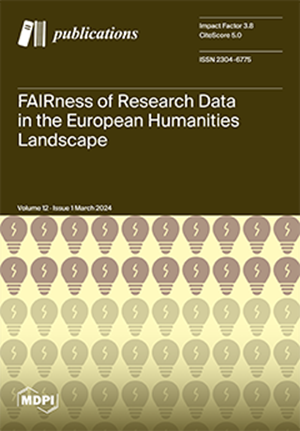Mapping Two Decades of Research Productivity in the Middle Eastern and Arab Countries: A Comprehensive Bibliometric Analysis
IF 2.5
Q1 INFORMATION SCIENCE & LIBRARY SCIENCE
引用次数: 0
Abstract
Middle Eastern and Arab countries have been experiencing significant advancements in scientific research and development over the past few decades. Understanding the trends, patterns, and impact of research within this region can provide valuable insights into its scientific landscape, identify areas of strength, and uncover potential areas for improvement. This study presents a comprehensive bibliometric analysis of research productivity in the Middle Eastern and Arab region over a 20-year period. The findings revealed a consistent increase in research productivity, yet mapped significant disparities between countries in scholarly output, excellence, and impact. Adjusting for population size and GDP, Iran displayed the highest publication activity, trailed by Egypt and Turkey. Delving into the distribution of research output across different journal quartiles, the results revealed that this region has a lower percentage of scholarly output published in high-impact journals (both the top 10% and the top 25% categories). Compared to North America and the European Union, the Middle Eastern and Arab region consistently exhibited lower performance in terms of top 10% citations, average citations per publication, and field-weighted citation impact. The field of physical sciences took the lead as the most prevalent subject area in the Middle Eastern and Arab region, comprising about 60.5% of the research emphasis. Conversely, social sciences garnered comparatively less research attention, making up approximately 8.9% of the focus. The region showed strong international collaboration levels (40.5%), yet relatively low national (24.4%) and academic–corporate collaborations (1.5%). The outcomes of this study can facilitate international comparisons and benchmarking, allowing Middle Eastern and Arab countries to position themselves within the global scientific community. There remains a need to prioritize quality over quantity by emphasizing rigorous research practices and collaboration. An ongoing evaluation of research performance using a combination of indicators can help track progress and adjust strategies as needed.绘制中东和阿拉伯国家二十年的研究生产力:一个全面的文献计量分析
过去几十年来,中东和阿拉伯国家在科学研究和发展方面取得了重大进展。了解该地区研究的趋势、模式和影响可以为其科学景观提供有价值的见解,确定优势领域,并发现潜在的改进领域。本研究对中东和阿拉伯地区20年来的研究生产力进行了全面的文献计量分析。研究结果显示,研究生产力持续提高,但各国在学术产出、卓越水平和影响力方面存在显著差异。根据人口规模和GDP进行调整后,伊朗的出版活动最高,埃及和土耳其紧随其后。深入研究不同期刊四分位数的研究成果分布,结果显示,该地区在高影响力期刊(前10%和前25%类别)上发表的学术成果百分比较低。与北美和欧盟相比,中东和阿拉伯地区在前10%的引用率、每篇论文的平均引用率和领域加权引用影响方面的表现一直较低。在中东和阿拉伯地区,物理科学领域是最受欢迎的学科领域,占研究重点的60.5%。相反,社会科学获得的研究关注相对较少,约占焦点的8.9%。该地区的国际合作水平较高(40.5%),但国内合作(24.4%)和学术与企业合作(1.5%)相对较低。这项研究的结果可以促进国际比较和基准,使中东和阿拉伯国家能够在全球科学界中定位自己。仍然需要通过强调严格的研究实践和合作来优先考虑质量而不是数量。利用综合指标对研究绩效进行持续评估有助于跟踪进展情况并根据需要调整战略。
本文章由计算机程序翻译,如有差异,请以英文原文为准。
求助全文
约1分钟内获得全文
求助全文
来源期刊

Publications
Social Sciences-Library and Information Sciences
CiteScore
6.50
自引率
1.90%
发文量
40
审稿时长
11 weeks
期刊介绍:
The scope of Publications includes: Theory and practice of scholarly communication Digitisation and innovations in scholarly publishing technologies Metadata, infrastructure, and linking the scholarly record Publishing policies and editorial/peer-review workflows Financial models for scholarly publishing Copyright, licensing and legal issues in publishing Research integrity and publication ethics Issues and best practices in the publication of non-traditional research outputs (e.g., data, software/code, protocols, data management plans, grant proposals, etc.) Issues in the transition to open access and open science Inclusion and participation of traditionally excluded actors Language issues in publication processes and products Traditional and alternative models of peer review Traditional and alternative means of assessment and evaluation of research and its impact, including bibliometrics and scientometrics The place of research libraries, scholarly societies, funders and others in scholarly communication.
 求助内容:
求助内容: 应助结果提醒方式:
应助结果提醒方式:


